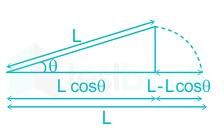Test: Linear Measurements - 1 - Civil Engineering (CE) MCQ
10 Questions MCQ Test - Test: Linear Measurements - 1
Which of the following instruments is generally used for base line measurements?
Which of the following is an obstacle to chaining but not to ranging?
Which of the following methods of offsets involves less measurement on the ground?
The permissible error in chaining for measurement with chain on rough or hilly ground is
The correction to be applied to each 30 metre chain length along θ° slope, is
A 30 m metric chain is found to be 0.1 m too short throughout the measurement. If the distance measured is recorded as 300 m, then the actual distance measured will be
A surveyor measured the distance between two points on the plan drawn to a scale of 1 cm = 40 m and the result was 468 m. Later he discovered that he used a scale of 1 cm = 20 m. What is the true distance between the two points?






















